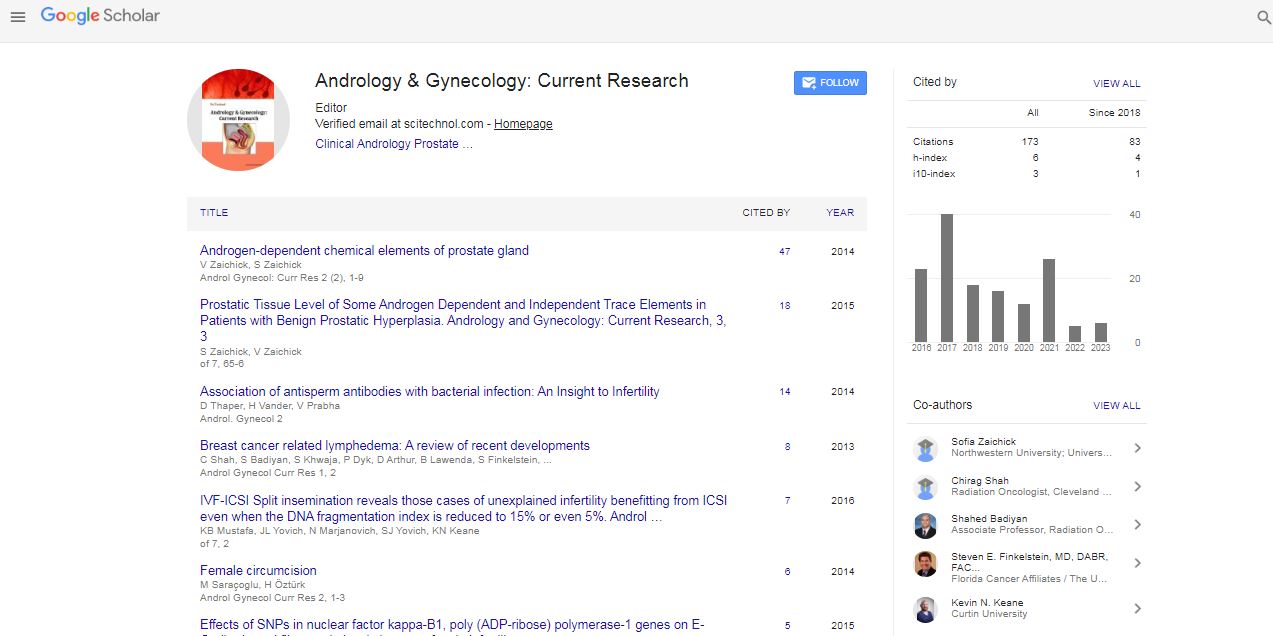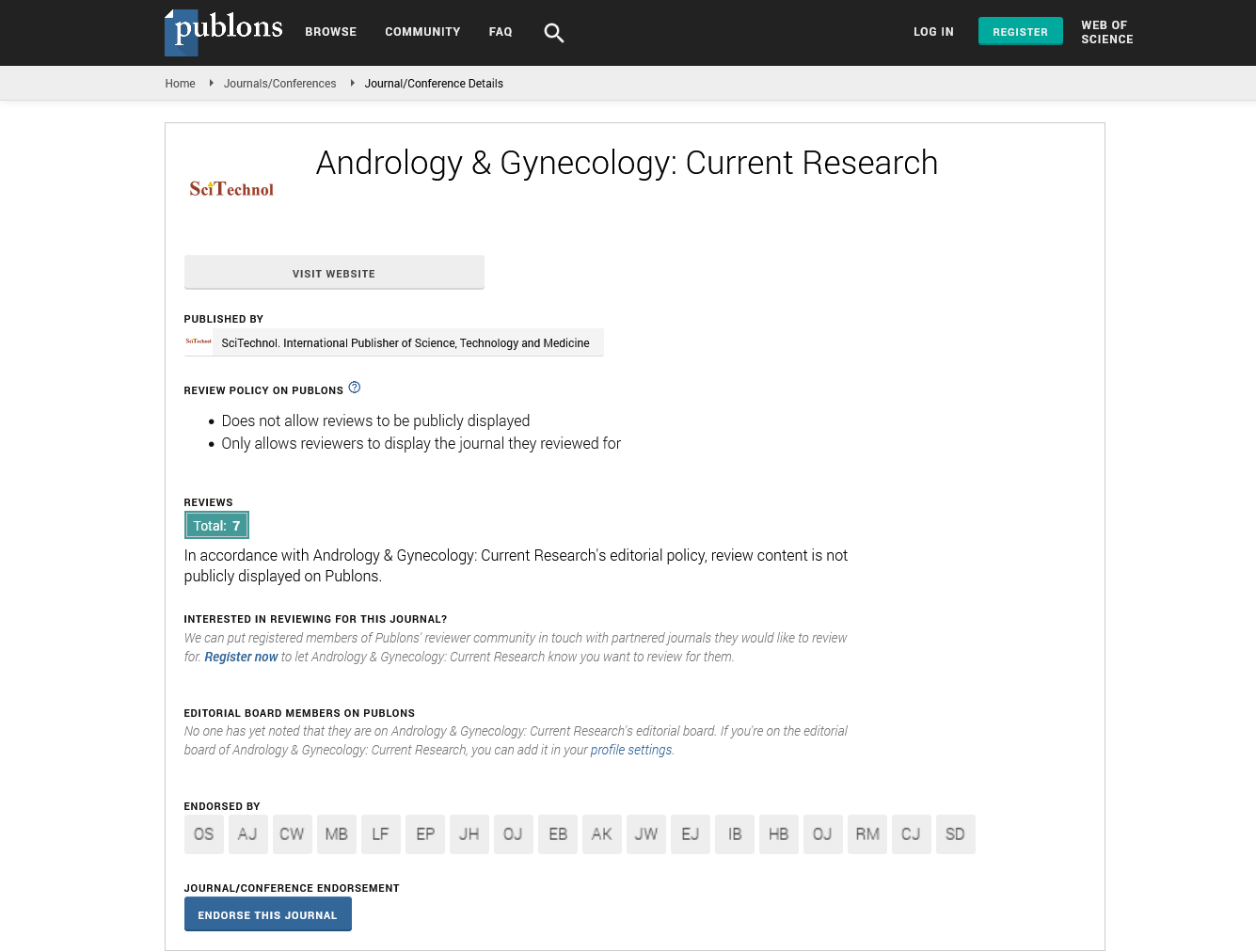Factors affecting the management, clinical course and treatment outcome of placenta invasion anomaly
Hasan Cilgin
Kafkas University, Turkey
: Androl Gynecol: Curr Res
Abstract
Objective: This study aimed to determine the clinical characteristics, treatment options and factors affecting the outcome of our patients who were underwent the caesarean section due to placenta invasion anomaly Materials and methods: In this study, a total of 106 placenta invasion anomalies cases that were diagnosed and treated between 2012 and 2018 were retrospectively evaluated. All the related information including the details of demographic characteristics, clinical symptoms and findings, diagnostic tools used, treatment options, risk factors for placenta invasion anomaly, outcome of treatment as well as associated morbidity and mortality were obtained from hospital patient database and saved in structured data entry forms designed for this purpose. Results: During the study period, 72 of the 106 patients (67.9 %) diagnosed with placenta invasion anomaly had at least one previous caesarean section. In 22 cases history of previous uterine instrumentation were observed, particularly when management of miscarriage/abortion was being considered and in remainning twelve cases no etiology was found. Most of the operations 62(58.5%) were conducted under elective conditions. Twelve of 26 focal placenta accreta cases were treated with bilateral hypogastric artery ligation due to increased bleeding during the operation, 4 with Bakri balloon tamponade in the combination with B-Lynch compression suture, 6 with placental bed saturation and 4 with wedge-shaped partial resection. Seven (6.6%) patients underwent urology and two underwent cardiovascular surgeon consultations during the operation. Six (5.6%) cases underwent complete bladder laceration repair. Forty-six (43.4%) of the cases underwent transfusion during the operation and blood products were given to 15 (14%) patient postoperatively. Seven (6.6%) patients developed dilutional thrombocytopenia due to massive transfusion. Histopathologically, in 62 cases (58.5%) placenta accreata, in 28 cases (26.4%) placenta increata and in 16 cases (15.1%) placenta percreata was diagnosed. No intraoperative or postoperative mortality was observed in all the operations. Conclusion: Just because of previous caesarean section and history of previous uterine instrumentation the frequency of placenta invasion anomalies is increasing so women should be informed about the potential risks when counseled prior to surgical evacuation and medical management or cervical ripening should be considered. Cesarean section hysterectomy as a classical treatment of placenta invasion anomaly should be performed by a team of experienced and well-planned tertiary centers where a multidisciplinary approach can be offered.
Biography
Hasan Çılgın is from Turkey. He was graduated from Medicine Faculty of Istanbul University in 2002. He completed proficiency in Obstetrics and Gynecology at Medicine Faculty of Fırat University in 2010. I have participated in courses in endoscopy, IVF and research methodology in various countries when I was a student and an assistant at Medicine Faculties reproductive technology in Istanbul University, I have begun to study at the department of Reproductive Endocrinology and Infertility at Kafkas University since 2015. I have been working at Medicine Faculty of Kafkas University since 2015. Althogh he has studied on IVF he has many articles on especially placental invasion anomaly.
E-mail: e: munzurluhasan@yahoo.com
 Spanish
Spanish  Chinese
Chinese  Russian
Russian  German
German  French
French  Japanese
Japanese  Portuguese
Portuguese  Hindi
Hindi 


